~ THE TURNING OF THE WHEEL ~
YULE / WINTER SOLSTICE
2008
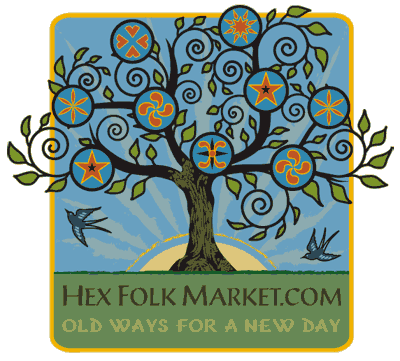
CALLING ALL MERCHANTS, ARTISANS, & MUSICIANS:
If you have something to sell and are interested in finding out more information about the upcoming Hex Folk Market — an online market in celebration of European Folk Ways and sustainable living — please send an email to hfm@hexmagazine.com. I will answer any questions you may have and keep you informed. We will be inviting merchants to start setting up shop in early January! All who join early will receive a discount!cheers, ~Arrowyn
* * * * * *
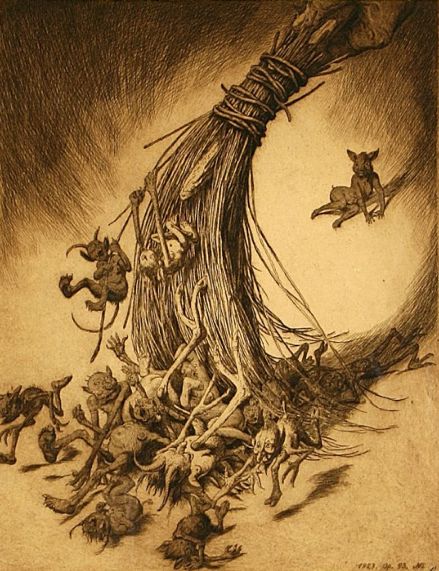
. : . Yule Season Traditions . : .
For the old world Heathen Household, Yule Tide was a time when the harvest was in, when the gifts of their ample labor would be shared, and when they would experience their darkest and leanest times together.
Many traditions are associated with this season and some are quite old. Most of us are familiar with some of them, including spending time with families and friends; sharing special foods, sweet treats, and spirits; gilding a special tree after muscling it into our living space; and decorating our homes and yards with lights and greenery.
The Anglo-Saxon calendar recorded by Venerable Bede (672-735), a Christian who documented many bits of information from his time, stated that Yule Month, or more appropriately Yule Tide, lasted twice as long as most other tides and encompassed the months of December and January. This 60 day tide was further divided into two sections, and a third is also implied. Starting with O.E. Ærra Jéola or “Before Yule,” and ending with O.E. Æftera Jéola or “After Yule.” The time right in the middle of these two seems to have started on Mother Night which was on Winter Solstice or the longest night of the year. From what I’ve been able to determine, many Heathens then celebrated for the next 12 (and sometimes 13 or 24) days until midnight of the last day called 12th Night. Of course timing varied from region to region, but in general it seems that Yule always encompassed several days and that leaves us plenty of time to share it with friends and family.
Yule was also apparently a good time to chase out ill-meaning wights like mischievous elves, dwarves, and trolls. Though it’s said that wights are who they are, and some serve a purpose, some are just…“Troll[s] – ugly dwarf[s] or giant[s], fiend[s] – [and] unpredictable,” ¹… and sending them back to where they came from is good for both them and us. Towards the end of the night of our Yule Feast, we grab our large family Thors Hammer (He likes to chase Trolls), and a fire source such as a candle, and some noise makers, like drums that can sound like the thunder Thor is known for. We then form a procession to go through the house waving the hammer and fire while drumming and rattling and shouting, “Out Trolls, out Trolls!” to scare these ill meaning wights out of the house. This year we’ll try incorporating a version of the chasing out that comes from Icelandic customs called bidding the alfs to home…
The house-mother would sweep everywhere, in every corner, then kindle lights all through the house, where-ever their might be a shadow. She then went out and around the dwelling, some say three times, and spoke, ‘Come, those who wish to come; stay those who wish to stay; and fare, those who wish to fare, harmless to me and mine.’
(Árni Björnsson, Jól á Íslandi, pp 138-139) ²
A new tradition we’ll try this year is hammering nails into doorways as threshold warders. This is a practice from Denmark where “…nails are also hammered into doorframes on Yule night to ward against trolls and dwarves.” (Feilberg, II, p. 56)³
This practice may be related to the iron nails in the high-seat pillars noted in the Icelandic Saga of the People of Eyri also known as Eyrbyggja Saga found in Chapter 4, “Thorolf Most-Beard Comes Out To Iceland, And Sets Up House There”:
There he let build a temple, and a mighty house it was. There was a door in the side-wall and nearer to one end thereof. Within the door stood the pillars of the high-seat, and nails were therein; they were called the Gods’ nails.?
Do some homework and reclaim the Yule Season for your own. May your friends and family surround you during this season, and a “Glad Yule to all and to all a good night!”
~ Teresa (Hedgewife) Luedke
Kiefernwald Sippe
1. www.etymonline.com
2. Kveldulf Gundarsson.Elves, Wights, and Trolls (Lincoln, NE: iUniverse, 2007); Page 5
3. Gundarsson; Page 7
4. www.sagadb.org/eyrbyggja_saga.en
Yule Log Dip
8 oz Pkg. Cream Cheese at room temperature
3 Tbsp. Sweet Pickle Relish
5 ox. Smashed blue cheese
2 Tbsp. finely minced onion.
1/2 cup finely chopped pecans or walnutsMix everything but nuts together and place on wax paper. Roll into log shape and cover. Refrigerate several hours or overnight. Remove and roll in nuts. Serve with crackers.
* * * * * *

• JERA •
Old English Rune Poem
Ger (Year/Harvest) is men’s hope, when God,
Holy heaven’s king, lets the earth give
Shining fruit to the warriors and the poor.
Old Icelandic Rune Poem
Ar (Harvest) is men’s bounty
And a good summer
And a full-grown field.
Old Norse Rune Poem
Ar (Harvest) is men’s bounty;
I guess that generous was Frodhi.
~ Rune poem translations by Sweyn Plowright
http://www.mackaos.com.au/Rune-Net/Primer/
And so we come to the end, the demise of another year, another tide brought in, another dusk reached its full spread across the sky.
When we come to grips with struggle it is tempting to hand ourselves to our fear or doubt. At such times, when dark shadows draw over the land, it serves us well to draw on the bounty of our heritage, our actions, and our hope. A pauper may yet be a millionaire if she has the golden light of a full field in her heart.
The stubble of Sif’s shorn head might draw us to mourn; or it might remind us that in time, Loki will return with golden threads to repair the loss. Let us not give in to resentment and spite against the agent of mischief – let us instead make friends with him, that his light touch might serve for the increase of weal.
All around us at the end of this year are grim tidings, and a miserly spirit rides the lands. Jera stands as a reminder that generosity is the highest Heathen virtue – and we should not let the threat of poverty extinguish the noble impulse to share and give.
Rich or poor, generosity has nothing to do with money and everything to do with heart. Love is what binds family to family; generation to generation; ancestor-gods to descendant-worshippers. Let’s pump plenty of it around in this season of ill cheer, and invite the gods to do the same!
In this sense, Jera might be taken as a reminder of the importance of self-nourishment. The more we give to ourselves, the more we have to offer those around us. The better we might serve to re-manifest the sleeping ways of the Northern gods.
The chill silence of year’s end is a clearing, a wiping away of the doings of the year. Now in this soft and vulnerable time we can take our chance to dream up bright seeds for the coming time of planting. And in that spirit I say to you –
Til ars ok frithar!
* * * * * *
Old-Fashioned Oatmeal Cookies
Ingredients:
3/4 c. softened butter (or vegetable oil)
1 c. local raw honey (or Rapadura sugar)
1 large egg
1/4 c. water
1 t. vanilla
1 c. whole grain spelt or whole wheat pastry flour
1 t. salt
1 t. cinnamon
1 t. nutmeg (freshly ground if possible)
1/2 t. baking soda
3 c. whole oats (not instant or quick oats)
1 1/2 c. dried fruit – raisins, cranberries, or prunes
1 c. nuts – walnuts or pecans1. Preheat oven to 350°F. Grease several cookie sheets with butter.
2. Using a hand mixer, beat the butter, honey, egg, water, and vanilla together until creamy in a large mixing bowl. In a seperate bowl, mix the flour, salt, spices, and baking soda. Then beat the dry mix into the wet mix. Stir in the oats; then the fruit and nuts.
3. Drop the dough by the spoonful onto prepared cookie sheets. It helps to mound them up, as they will spread in the oven. Bake until rich and browned, 12–15 minutes. Enjoy.
~ adapted from The Rustic Table, by Constance Snow
These cookies are delicious and nutritious! The ingredients are inexpensive and this recipe will make about 2 dozen medium-sized cookies. They are especially good with a glass of raw milk!
Speaking of which, if you live in the Portland area and wish to order raw milk from an excellent local dairy, contact me (hit reply) for more details. Our household has become a raw milk drop spot for North Portland! Yum!
~Arrowyn Craban
* * * * * *
WARDRUNA
Debut Album:
“RUNALJOD – GAP VAR GINNUNGA”
Release date: Jan.19th
Track listing:
* Ár var alda * Hagal * Bjarkan * Løyndomsriss * Heimta Thurs * Thurs * Jara * Laukr * Kauna * Algir – Stien klarnar * Algir – Tognatale * Dagr
The idea of Wardruna began to take shape in 2002 as a project where founder and main man Einar Kvitrafn Selvik (Jotunspor, Gorgoroth, Sahg, etc.) could work with a musical expression and instrumentation very different from what his involvements in various metal bands would allow. Naturally, it also became a place where his passion for and practice of Norse paganism and runes could be combined with music. In the spring of 2007 the project started to attract attention after it was featured on the soundtrack of the much publicized ‘True Norwegian Black Metal’ documentary about Gaahl (Trelldom, Gorgoroth, etc.) by Peter Beste and Vice Films. Despite no releases or live appearances, Wardruna has since then gathered a respectable and maybe surprisingly diverse following.
Now, after nearly six years in the making, the long awaited debut album of Wardruna is finally finished. It is the first album in the planned ‘Runaljod’ trilogy which will musically interpret the runes of the elder futhark. This highly visual music is hard to place into any specific genre, and there isn’t really much to compare it with either. The style can perhaps be described as a curious blend of folk, world and ambient music, but without being limited by the sometimes restricted scope of these genres. ‘Runaljod – gap var Ginnunga’ has a very profound and unique sound that consist of a wide array of instruments, some of which are seldom used nowadays. A few examples: deer hide frame drums, mouth harp, goat horns, lur, Hardanger fiddle, and tagelharpe (‘viking fiddle’). Sounds of more unorthodox ‘instruments’ like trees, stones, and fire are also incorporated into the music, and it’s all topped off with powerful vocal performances from no less than three vocalists.
The album was produced and engineered by Kvitrafn himself in his own, aptly named, Fimbulljóð studio. Many of the recording sessions were executed outdoors at carefully selected locations with instruments or natural sounds that are relevant to the different runes.
www.wardruna.com
www.myspace.com/wardruna
www.indierec.no
www.myspace.com/indierecordings
* * * * * *
Hex needs your help! This is a community-supported not-for-profit publication. You can support us by clicking the link above and ordering magazines and prints, and spreading the word to all like-minded folk!
* * * * * *
Until Imbolc, may you and your
household be blessed and kept. Hail!
~ HEX Magazine
* * * * * *



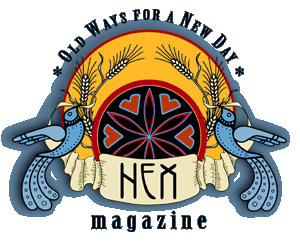
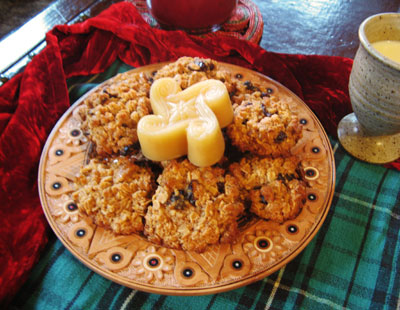
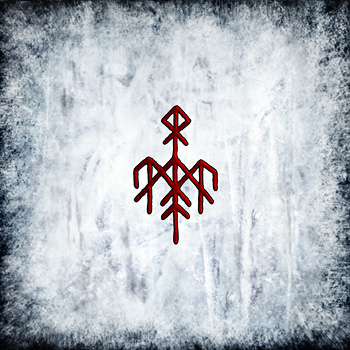
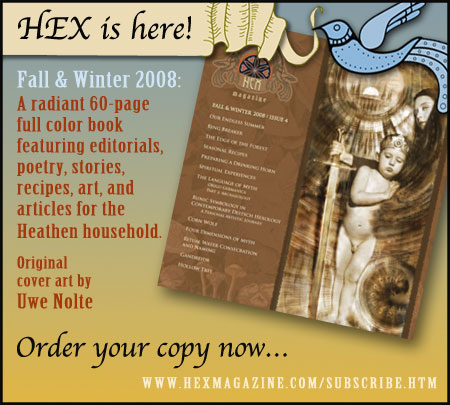






Leave a Reply